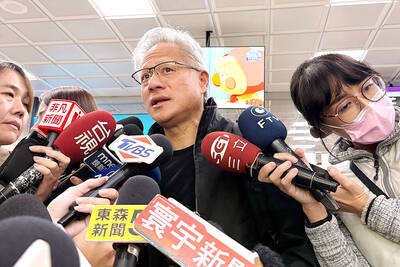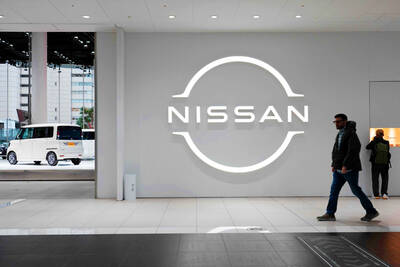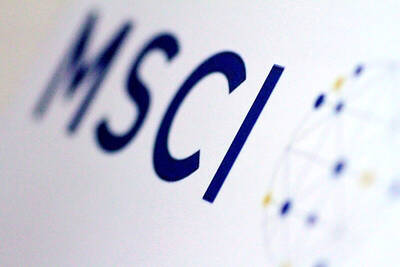The unemployment rate fell to 3.91 percent last month, its lowest level in nearly six years, on the back of an economic recovery that boosted momentum in the job market, the Directorate-General of Budget, Accounting and Statistics (DGBAS) said yesterday.
The rate of 3.91 percent last month was an improvement by 0.12 percentage points from 4.03 percent in March and by 0.16 percentage points from 4.07 percent in April last year, the agency said in its monthly report. The figure marked the lowest level since June 2008.
It was the first time the jobless rate has fallen below 4 percent since the global financial crisis in 2008, the agency said.
The seasonally adjusted unemployment rate — a more accurate indicator of the long-term employment trend — also fell, shedding 0.02 percentage points from March to 4.04 percent last month, the report said.
“During the financial crisis [in 2008], the pace of economic recovery was slow, which made the nation’s jobless rate stay above 4 percent for quite a while,” DGBAS Deputy Director Lo Yi-ling (羅怡玲) told a press conference.
However, demand in both the public and private sectors has rebounded this year, driving the number of unemployed down by 14,000 to 449,000 last month from March, she said.
Lo said she remains cautious about the unemployment situation in the near future, as a new round of college graduates will enter the job market next month, an expected influx of about 300,000 first-time jobseekers.
However, 1111 Job Bank (1111人力銀行) public relations director Daniel Lee (李大華) said the demand for staff may remain strong in the second half of the year, mainly driven by strong orders received in the electronics sector.
The DGBAS report also said that the average monthly wage in the industrial and service sectors climbed to a record-level NT$37,808 in the first three months of the year, an increase of 1.31 percent from the previous year.
The overall average monthly wage, including bonuses and compensation, rose 5.54 percent to a new high of NT$57,582 in the first quarter, compared with the same period in the previous year, the report said.
However, the increase in the average wage was still lower than the pace of the consumer price index.
After adjusting the average for inflation — which climbed 0.8 percent year-on-year in the January-to-March period — the real average wage, including bonuses and compensation, totaled NT$55,872, which was still less than the NT$56,949 recorded during the same period in 1998, the DGBAS report said.

PERSISTENT RUMORS: Nvidia’s CEO said the firm is not in talks to sell AI chips to China, but he would welcome a change in US policy barring the activity Nvidia Corp CEO Jensen Huang (黃仁勳) said his company is not in discussions to sell its Blackwell artificial intelligence (AI) chips to Chinese firms, waving off speculation it is trying to engineer a return to the world’s largest semiconductor market. Huang, who arrived in Taiwan yesterday ahead of meetings with longtime partner Taiwan Semiconductor Manufacturing Co (TSMC, 台積電), took the opportunity to clarify recent comments about the US-China AI race. The Nvidia head caused a stir in an interview this week with the Financial Times, in which he was quoted as saying “China will win” the AI race. Huang yesterday said

Nissan Motor Co has agreed to sell its global headquarters in Yokohama for ¥97 billion (US$630 million) to a group sponsored by Taiwanese autoparts maker Minth Group (敏實集團), as the struggling automaker seeks to shore up its financial position. The acquisition is led by a special purchase company managed by KJR Management Ltd, a Japanese real-estate unit of private equity giant KKR & Co, people familiar with the matter said. KJR said it would act as asset manager together with Mizuho Real Estate Management Co. Nissan is undergoing a broad cost-cutting campaign by eliminating jobs and shuttering plants as it grapples

The Chinese government has issued guidance requiring new data center projects that have received any state funds to only use domestically made artificial intelligence (AI) chips, two sources familiar with the matter told Reuters. In recent weeks, Chinese regulatory authorities have ordered such data centers that are less than 30 percent complete to remove all installed foreign chips, or cancel plans to purchase them, while projects in a more advanced stage would be decided on a case-by-case basis, the sources said. The move could represent one of China’s most aggressive steps yet to eliminate foreign technology from its critical infrastructure amid a

MORE WEIGHT: The national weighting was raised in one index while holding steady in two others, while several companies rose or fell in prominence MSCI Inc, a global index provider, has raised Taiwan’s weighting in one of its major indices and left the country’s weighting unchanged in two other indices after a regular index review. In a statement released on Thursday, MSCI said it has upgraded Taiwan’s weighting in the MSCI All-Country World Index by 0.02 percentage points to 2.25 percent, while maintaining the weighting in the MSCI Emerging Markets Index, the most closely watched by foreign institutional investors, at 20.46 percent. Additionally, the index provider has left Taiwan’s weighting in the MSCI All-Country Asia ex-Japan Index unchanged at 23.15 percent. The latest index adjustments are to